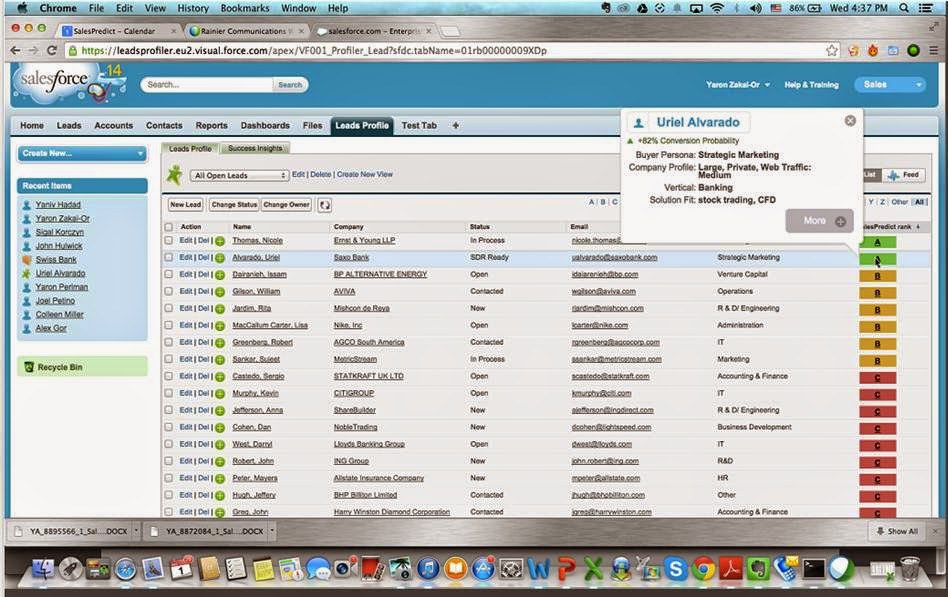A couple of weeks ago, I wrote that “predictive everywhere” is one of major trends in data-driven marketing. I meant both that predictive models guide decisions at every stage in many marketing programs, and that models are used throughout the organization by marketing, sales, and service.
I might have added a third meaning: that systems to do predictive modeling are everywhere as well. SalesPredict is a perfect example: a small vendor with a powerful system that just launched earlier this year. Back in, say, 2008, a product like this would be big news. Today, I simply add them to my list and try to understand what makes them different.
In this case, the main technical differentiator is extreme automation: SalesPredict imports customer data, builds models, scores current records, and deploys the results with virtually no human intervention. This is possible primarily because the painstaking work of preparing data for analysis – which is where model builders spend most of their time – is avoided by connecting to a few standard sources, currently Salesforce.com and Marketo with HubSpot soon to follow. Because it knows what to expect, the system can easily load customer data and sales results from those systems. It then enhances the data with business and demographic information from public Web pages and third party sources like Zoominfo. Finally, it produces models that rank customers based on how closely they resemble members of any user-specified list, such as customers with deals that closed or who failed to renew. Results appear as lists in a CRM interface or as scores on a marketing databaset. The whole process takes just a few hours from making the Salesforce.com connection to seeing scored records, with most of the time spent downloading CRM data and scanning the Web for other information. Once SalesPredict is installed, models are continuously updated based on new CRM information and on feedback provided by users as they review the scored records. This enables the system to automatically adjust as buyer behaviors and conditions change.
User interface is a second differentiator. CRM users see a ranked list of customer records with a system-assigned persona derived using advanced natural language processing, suggested actions such as which products to offer, and the key data values that influenced the ranking. Users can drill further into each record to see more customer and company information including previous interactions, products owned, and won or lost deals. The company information is assembled from internal and external sources using SalesPredict’s own matching methods, so results are not at the mercy of data quality within the CRM. As previously noted, users can adjust a ranking if they feel the model is wrong; this is fed back to the system to adjust future predictions. Another screen shows which data values are most powerful in predicting success. This helps users understand the model and suggests criteria for targeting increased marketing investment. Although there’s no great technical wizardry required to provide these interfaces (except perhaps the name and account matching), they do make results more easily understood than many other predictive modeling products.
The final differentiator is flexibility. The system can model against any user-defined list, meaning that SalesPredict can score new leads, identify churn risk, or find the most likely buyers for new products. Recommendations also draw on a common technology, whether the system is suggesting which products a customer is most likely to buy, which content they are most likely to download, or which offers they are most likely to accept. That said, SalesPredict’s primarily integration with Salesforce.com, user interface, and company name itself suggest the vendor’s main focus is on helping sales users spend their time on the most productive lead. This is somewhat different from predictive modeling vendors who have focused primarily on helping marketers with lead scoring.
Is SalesPredict right for you? Well, the automation and flexibility are highly attractive, but the dependence on CRM data may limit its value if you want to incorporate other sources. Pricing was originally based on the number of leads but is currently being revised, with no new details available. However, it’s likely that the company will remain small-business-friendly in its approach. SalesPredict currently has about 15 clients, mostly in the technology industry but also with some in financial services and healthcare.




